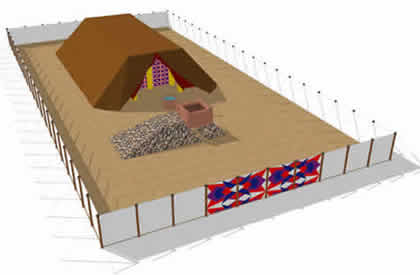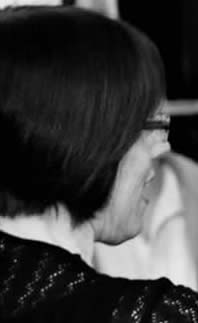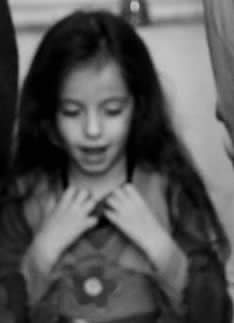|
InteGRATion into
GRATeFULLness
Singing&Sounding keeps me Sound
Am Brunnen vor dem Tore
At the well outside the gate
| 2007_08_28 Am Brunnen vor dem Tore |
lyrics
by Wilhelm Mueller put into music by Franz Schubert, simplificied into a folksong by Friedrich Silcher |
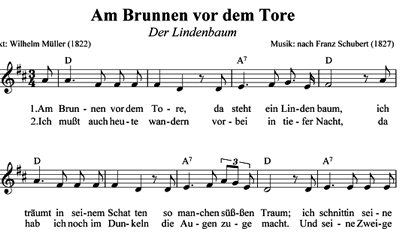
C
G7 C Am Brunnen vor dem Tore da steht ein Lindenbaum. C G7 C Ich träumt in seinem Schatten so manchen süßen Traum. G7 C F C G7 Ich schnitt in seine Rinde so manches liebe Wort. G7 C Es zog in Freud und Leide C G7 C G7 C Zu ihm mich immer fort. Zu ihm mich immer fort. |
C
G7 C Ich mußt auch heute wandern vorbei in tiefer Nacht. C G7 C Da hab ich noch im Dunkel die Augen zugemacht. G7 C F C G7 Und seine Zweige rauschten als riefen sie mir zu: G7 C "Komm her zu mir, Geselle C G7 C G7 C Hier findst du deine Ruh, hier findst du deine Ruh." |
C G7 C
Die kalten Winde bliesen mir grad ins Angesicht.
C G7 C
Der Hut flog mir vom Kopfe. Ich wendete mich nicht.
G7 C F C G7
Nun bin ich manche Stunde entfernt von diesem Ort.
G7 C
Und immer hör ich's rauschen:
C G7 C G7 C
"Du fändest die Ruhe dort, Du fändest die Ruhe dort."
![]()
2011
 |
En-JOY-ing
and growing with Mika and my Family following the documentation "Mika's Heaven on Earth", inserted since Song Game 2007_01_01 |
 |
"Driving Backward" to February 1, 2011: Itamar's
Bar-Mitzvah
continued
from Song Page 2007_08_27
Rafael Rosenzweig , 1922-2001, was married to Ines Cohn from 1946-1963 and to Christa-Rachel Guth from 1964-1981
Rafael Rosenzweig's descendants
I n e s 1923 Dita 1952 & Gideon 1951 |
I n e s Joel 1947 & Tova
|
C h r i s t a - R a c h e l 1938 Immanuel 1963
& Ruth 1963 |
C
h r i s t a - R a c h e l Ronnit 1965 & Uri 1963 Jonathan 1991 |
C h r i s t a - R a c h e l Micha 1966 & Ra'ayah 1957 Arnon 1996
|
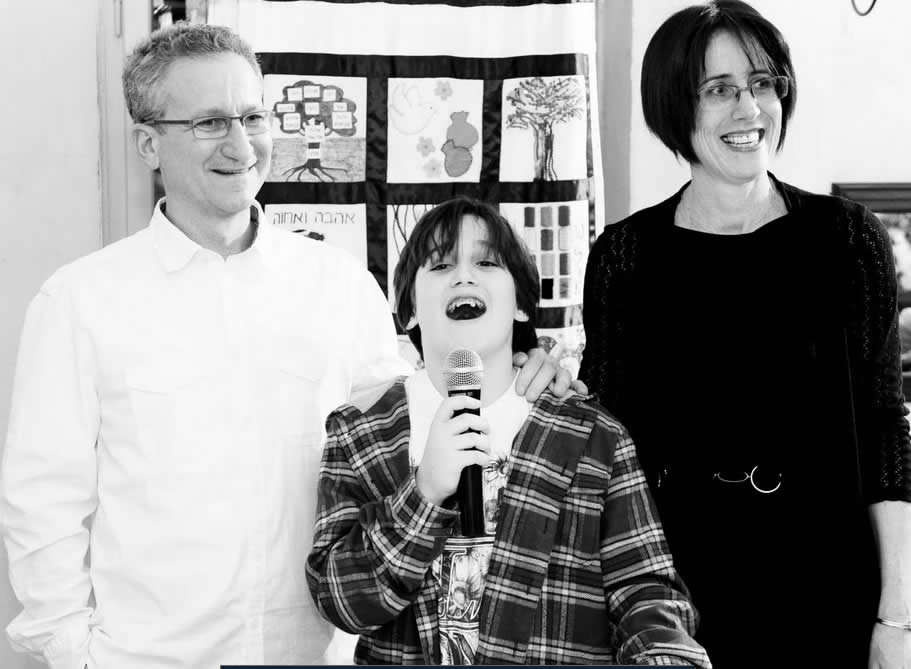
What a picture!
My daughter's whole joy makes me joyous!
Behind Uri on his shoulder is written: Ahavah ve-Akhvah
- Love and Brother/Sister-hood.
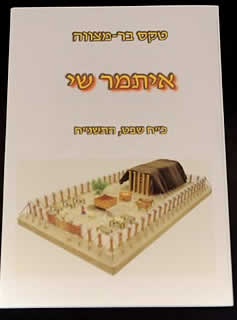 |
Itamar's "Parashah"
"Trumah" Terumah or Trumah The parashah tells of God’s
instructions |
|
Itamar's Speech (with reference to his parashah and thanks,
not only to his close family, but to the "Quartet" and to Grandma Rachel Bat-Adam)
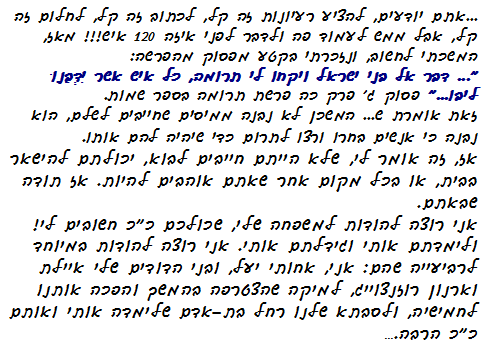 |
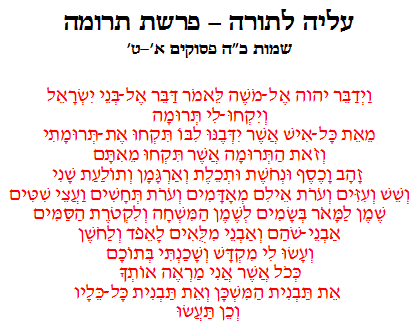 |

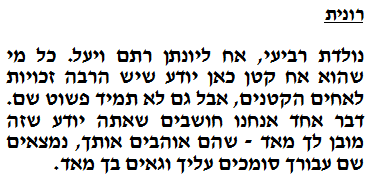 |
In
between Ronnit's words other guests conbributed their blessings: A representative of their Learning Community' of which also Itamar's Bar-Mitzvah-tutor Shimko El-Ammi, is a part The Song of their Learning Community, Then Rotem, Itamar's elder sister, and Arnon and Ayelet , Itamar's cousins and his peers in the "Quartet" since 2001 And most moving - for me - the duet of Jonathan and Yael about the brave cypress (s. previous page) |
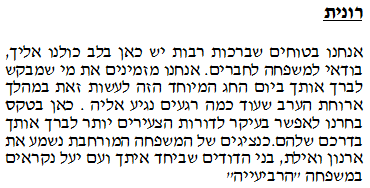 |
And everybody hummed the Chassidic
song,
which has such a sweet tune [hear
it performed
by Hava Alberstein...],
but the text of Psalm
34:13-15 is not what I would teach anybody:
to be only good ---- means t o d e n y
our shadow,
and the result of this can be seen all over the world...
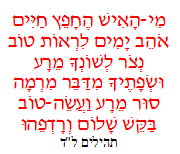

My Children...

|

|

A mixture: Arnon, Ayelet, Ra'ayah, and behind her
Immanuel meet with Yael

Mother and son and grandson
[I had come to this place with Ronnit, not with him and his
family]

Though Micha is only seen from the back, and of Ra'ayah
is seen less than half her face and Uri is missing:
this is a composition of all my 3 children, with Ronnit in the middle, as
she was born in the middle between Immanuel and Micha.
And the grandchilden? Tomer represents Immanuel, Yael represents Ronnit and
- talking with her - Arnon represents Micha

 |
 |

Uri's brother Dani had come from Switzerland, where he works. What am I demonstrating to him with my open hands?
 |
Jonathan, my daughter's eldest, with Dita, my stepdaughter, and her husband Gid'on
 |
|
 Mika has found a play-mate - though not in her own family, since she is the youngest, and my stepchildrens' grandchildren are either younger or were not in the country |
 |

Through joys and woes for 25 years : a truly happy
couple with four wonderful children
 |
 |

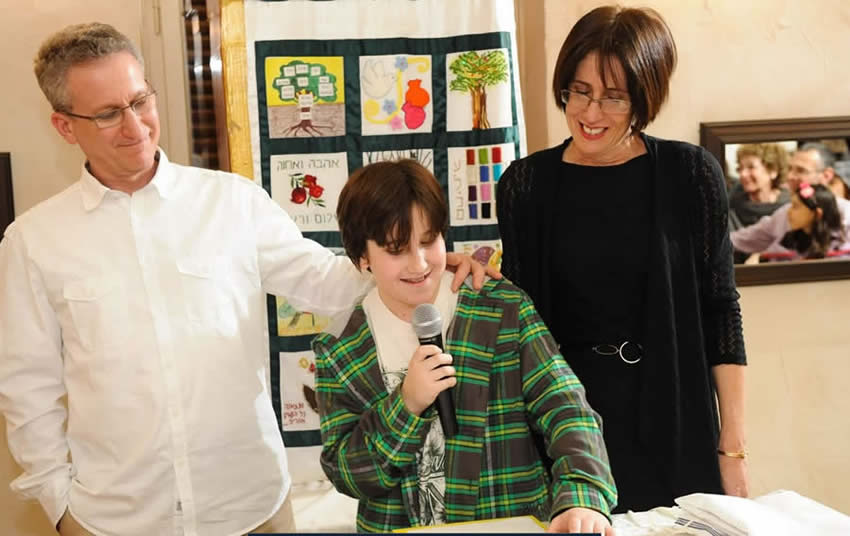


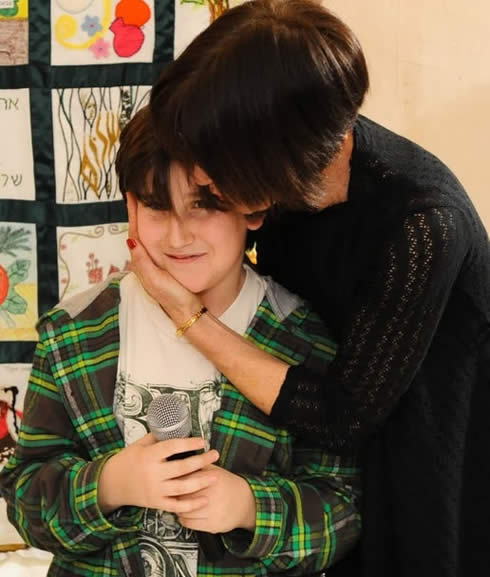
Continuation of "En-JOY-ing
and Growing with Mika and my Family" on
Song Game 2007_08_29
February 24, 2012
A pretty interpretation of Itamar's Bar-Mitzvah Parashah:
"COMMUNITY, BUSINESS AND WE"
[by
Ofra Palmer-Granot- see her blogspot, which is extremely relevant not
only to Ronnit, but to me too]
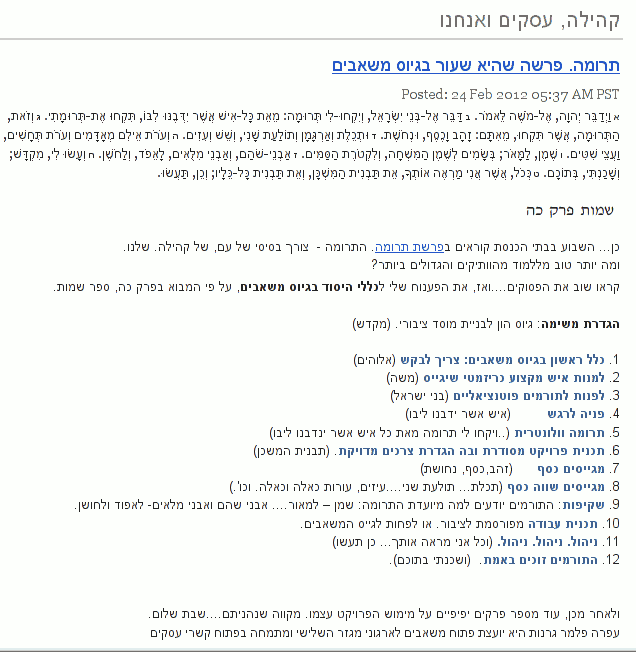
In the weekly program with Dov Elboim about the Parashah,
the architect, Gai Igra, whom he invited to talk
about parashat-trumah,
[see mainly
Exodus 26 - in both my Bibles I long ago made very relevant notes,
but it's not my preference now, to again learn these technical-mystical instructions
of how to built the ONE sanctuary in the desert. ]
taught me something beautiful:
Unlike Greek buildings , for instance,
the "container-size" sanctuary had not 4 but 5 columns,
this means, that there was no main entrance (for "important" people).
"and if there is no main entrance, all entrances are of equal importance,
this is a message of pluralism, like we know it from Islam:
Compare the axial hierarchic architecture of a Christian cathedral
with the architecture of a mosque:
many columns, and though there is a direction, all columns are equal.
Gai Igra also said, that in the overinterpreted sentence:
the emphasis is on "make me a sanctuary"
and not "I dwelt among them".
In their "making" is God's "dwelling".
"That's a Zen-like interpretation", said Elboim.
Igra agreed and Elboim was willing to follow him.
I, on the other hand, do take this "dwelling" among them seriously,
when it comes to "Who dwells with them
in the midst of their pollution [tum'atam]"
[see in "the Biblical Ohel Mo'ed or Tent of Appointment"]

